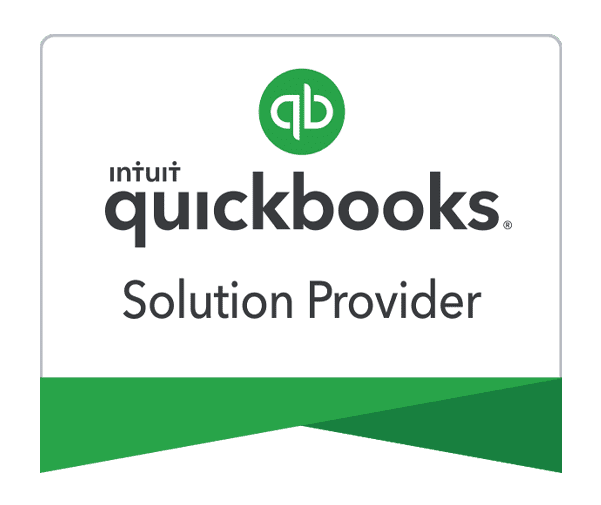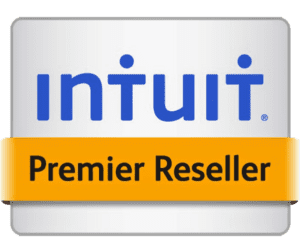One of the biggest challenges of managing cash flow is dealing with late payments. Late invoices can disrupt financial planning, leading to cash shortages and hampering your ability to grow and invest in your business. QuickBooks offers several tools and strategies to help businesses collect overdue invoices efficiently and effectively, ensuring a healthier cash flow and more predictable financial management.
From automated reminders to comprehensive reporting, QuickBooks provides a suite of features designed to streamline the collection process. Let’s discuss the different key strategies for collecting late invoices using QuickBooks to help you optimize your receivables and maintain a steady cash flow.
Set Clear Payment Terms
Setting clear payment terms from the outset is essential in ensuring that your clients understand their obligations and the consequences of late payments. In QuickBooks, you can customize payment terms for each customer, specifying due dates, payment methods, and any applicable late fees. By clearly outlining these terms on every invoice, you set the expectation that timely payments are required and enforceable.
Having explicit payment terms helps prevent misunderstandings and disputes over payment schedules. When clients know the exact due date and potential penalties for late payments, they are more likely to prioritize settling their invoices on time. Additionally, using QuickBooks to automate the inclusion of these terms on all invoices ensures consistency and professionalism in your billing process.
Use Automated Invoice Reminders
One of the most powerful features of QuickBooks is the ability to send automated invoice reminders. These reminders can be scheduled to notify clients of upcoming due dates, overdue payments, and even friendly nudges before late fees are applied. By setting up automated reminders, you can reduce the likelihood of invoices slipping through the cracks and ensure that your clients are always aware of their outstanding balances.
Automated reminders not only save time but also improve your cash flow by encouraging prompt payment. QuickBooks allows you to customize the content and timing of these reminders, ensuring they align with your business’s communication style. Consistent follow-up through automated reminders keeps your invoices top of mind for clients and demonstrates your commitment to maintaining a professional relationship.
Implement Late Fees and Penalties
Late fees and penalties are effective tools for incentivizing prompt payment. By implementing a late fee policy within QuickBooks, you create a financial consequence for overdue invoices, encouraging clients to prioritize settling their debts. QuickBooks allows you to automatically apply late fees to invoices based on your predefined criteria, such as a percentage of the outstanding amount or a flat fee.
When setting up late fees, it’s important to communicate this policy clearly to your clients. Include the details of your late fee structure in your payment terms and ensure it is visible on every invoice. This transparency helps clients understand the importance of timely payment and the potential cost of delay. By enforcing late fees consistently, you reinforce the expectation of prompt payment and reduce the occurrence of overdue invoices.
Learn more about automating invoices and managing late fees in QuickBooks.
Offer Flexible Payment Options
Providing flexible payment options can significantly improve your chances of collecting late invoices. QuickBooks allows you to offer various payment methods, such as credit cards, ACH transfers, and digital wallets, making it easier for clients to pay their outstanding balances. By accommodating different payment preferences, you reduce barriers to payment and increase the likelihood of prompt settlement.
In addition to multiple payment methods, consider offering payment plans for clients facing financial difficulties. QuickBooks makes it easy to set up installment plans, allowing clients to pay their invoices in manageable portions over time. This flexibility not only helps clients meet their obligations but also demonstrates your willingness to work with them, fostering stronger business relationships.
Send Professional Follow-Up Messages
Following up on late invoices with professional, courteous communication is crucial in maintaining a positive client relationship while collecting overdue payments. QuickBooks enables you to send personalized follow-up messages, allowing you to address the client’s specific situation and encourage prompt payment. Crafting a well-worded follow-up message that balances firmness with empathy can be highly effective in resolving late payment issues.
When composing follow-up messages, focus on maintaining a respectful tone while clearly outlining the payment details and any applicable late fees. Acknowledge any potential challenges the client may be facing and offer solutions, such as payment plans, to facilitate payment. By demonstrating professionalism and understanding, you increase the likelihood of receiving payment without damaging the client relationship.
Utilize QuickBooks Reports for Insights
QuickBooks provides powerful reporting tools that offer insights into your accounts receivable and help identify trends in late payments. By regularly reviewing these reports, you can pinpoint clients who consistently pay late, assess the effectiveness of your collection strategies, and identify potential areas for improvement. Utilizing QuickBooks reports enables you to make data-driven decisions and refine your approach to collecting late invoices.
Key reports to consider include the Accounts Receivable Aging Report, which highlights overdue invoices and the clients responsible, and the Invoice List Report, which provides a detailed view of all issued invoices. Analyzing these reports allows you to prioritize your collection efforts, focusing on the most significant outstanding balances and identifying clients who may benefit from alternative payment arrangements.
Offer Early Payment Discounts
Incentivizing early payment can be an effective strategy for reducing late invoices. QuickBooks allows you to offer early payment discounts, encouraging clients to settle their invoices ahead of the due date in exchange for a financial reward. This approach not only improves cash flow but also fosters goodwill and strengthens client relationships by demonstrating your appreciation for timely payments.
To implement early payment discounts, clearly define the discount terms in your payment policies and ensure they are communicated on each invoice. Specify the discount percentage, the timeframe within which it applies, and any conditions that must be met. By providing a clear incentive for early payment, you motivate clients to prioritize their invoices and help ensure a steady flow of cash into your business.
Automate the Invoicing Process
Automation is a powerful tool for improving efficiency and reducing the likelihood of late payments. QuickBooks offers features that automate various aspects of the invoicing process, from generating invoices to sending reminders and processing payments. By leveraging automation, you can streamline your billing operations, reduce manual errors, and ensure that invoices are sent promptly and consistently.
Automating your invoicing process not only saves time but also enhances the professionalism of your business. QuickBooks allows you to create templates for recurring invoices, schedule automatic reminders, and integrate with payment gateways for seamless transactions. By automating these tasks, you can focus on strategic activities that drive growth while maintaining a smooth and efficient billing cycle.
Maintain Open Communication with Clients
Open communication is key to managing late invoices effectively. By maintaining regular contact with your clients, you can address any payment issues promptly and work together to find solutions. QuickBooks facilitates communication by allowing you to send messages, reminders, and follow-ups directly through the platform, ensuring that all interactions are documented and easily accessible.
When communicating with clients about late payments, prioritize clarity and empathy. Listen to their concerns and offer flexible solutions, such as payment plans or alternative payment methods. By demonstrating understanding and willingness to collaborate, you can resolve payment issues more effectively and strengthen the client relationship.
Leverage Customer Statements
Customer statements are valuable tools for providing clients with a comprehensive overview of their outstanding balances. QuickBooks allows you to generate and send customer statements, which summarize all unpaid invoices and payments received within a specific period. By regularly sending statements, you keep your clients informed of their financial obligations and encourage prompt payment.
Customer statements not only serve as reminders but also provide transparency and accountability. They help clients track their payment history and identify any discrepancies or missed payments. By leveraging customer statements, you enhance communication and facilitate timely resolution of outstanding balances.
Integrate QuickBooks with a Payment Gateway
Integrating QuickBooks with a payment processing solution is a vital strategy for enhancing your ability to collect late invoices. By using a payment gateway, you can accept credit card payments, ACH transfers, and other electronic payment methods directly through QuickBooks. This integration simplifies the payment process for your clients and can significantly speed up the collection of overdue invoices.
When QuickBooks is integrated with a solid payment processor, you can automate payment collection and offer clients a convenient way to settle their balances. This setup allows customers to pay invoices directly from the email reminders they receive, reducing the friction of manually processing payments. Additionally, the integration provides real-time updates on payment status, ensuring that your accounting records are always accurate and up-to-date. By offering multiple payment options, such as credit cards and digital wallets, you can cater to different client preferences, increasing the likelihood of timely payments and reducing the occurrence of late invoices.
Conclusion
Streamlining your invoice management process is essential for maintaining a healthy cash flow and fostering strong client relationships. By implementing the strategies outlined in this article and leveraging QuickBooks’ powerful features, you can effectively collect late invoices and optimize your accounts receivable.
If you’re ready to experience the benefits of efficient invoice management with QuickBooks, Paygration can assist you in setting up the integration and optimizing your billing cycle. Our team of experts is ready to help you navigate the process and ensure a seamless transition to automated invoicing. Get started today by calling 866-949-7267 or signing up for a free demo below.

















